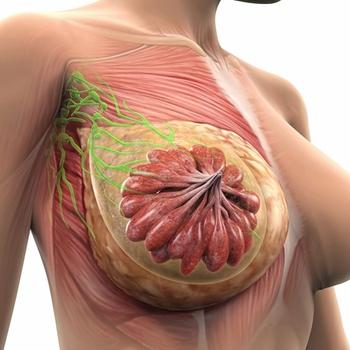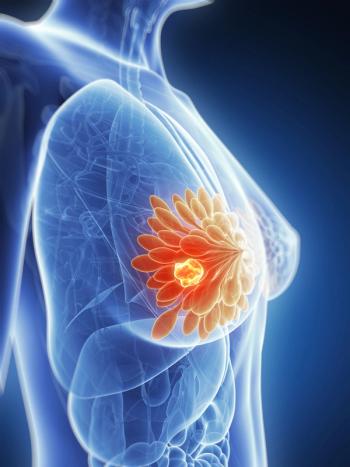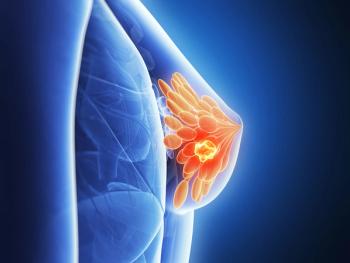
Outcomes of the SARS-CoV-2 Infection in Patients with Cancer Treated in China
Researchers reported on the incidence and outcomes of the SARS-CoV-2 infection, which has been linked to COVID-19, in patients with cancer who were treated at a tertiary cancer institution in Wuhan, China.
In a research letter, published in JAMA Oncology, researchers reported the incidence and outcomes of the severe adult respiratory syndrome coronavirus 2 (SARS-CoV-2) infection in patients with cancer who were treated at a tertiary cancer institution in Wuhan, China.1
The novel coronavirus disease 2019 (COVID-19) has been linked to SARS-CoV-2, which first occurred in Wuhan, Hubei in December 2019.
“Patients with cancer are often recalled to the hospital for treatment and monitoring, and hence, they may be at risk of contracting COVID-19,” the authors wrote. “Moreover, cancer treatments such as chemotherapy and radiotherapy are immunosuppressive.”
Researchers reviewed the medical records, including demographic, clinical, and treatment data, of 1,524 patients with cancer who were admitted to the Department of Radiation and Medical Oncology at Zhongnan Hospital of Wuhan University from December 30, 2019 to the data-cutoff date of February 17, 2020. COVID-19 pneumonia was diagnosed based on updated criteria, and outcomes of COVID-19 among patients with cancer were reported.
The estimated infection rate of SARS-CoV-2 in patients with cancer from the single institution in China was at 0.79% (12 of 1,524 patients; 95% CI, 0.3-1.2), which was higher than the cumulative incidence of all diagnosed COVID-19 cases reported in the city of Wuhan over the same time period (0.37%; 41,152 of 11,081,000 cases). The median age of infected patients was 66 years (range, 48-78 years), and 8 of the 12 patients (66.7%) were older than 60 years.
Seven of the 12 patients (58.3%) had non-small cell lung cancer (NSCLC). Five patients (41.7%) were being treated with either chemotherapy with or without immunotherapy (n = 3) or radiotherapy (n = 2). Moreover, 3 patients (25.0%) developed SARS, 1 of which required intensive-level care. As of March 10, 2020, 6 patients (50.0%) had been discharged and 3 deaths (25.0%) had been recorded.
Other types of malignancies present in the patients who were infected included rectal, colon, pancreatic, breast, and urothelial cancer.
Researchers also contacted the association of SARS-CoV-2 infection and found that of the 1,524 patients with cancer who were screened, 228 were diagnosed with NSCLC. Given the overall findings, the researchers suggested that patients with NSCLC who are older than 60 years of age had a higher incidence of COVID-19 than those aged 60 years or younger (4.3% vs 1.8%). However, a larger sample size of patients with cancer would resolve these potential associations.
“We propose that aggressive measures be undertaken to reduce frequency of hospital visits of patients with cancer during a viral epidemic going forward,” the authors wrote. “For patients who require treatment, proper isolation protocols must be in place to mitigate the risk of SARS-CoV-2 infection.”
So far, no isolation protocols or other guidelines of that nature, outside of social distancing, have been indicated by the FDA or other government health organization for patients with cancer.
Current CDC recommendations for high risk groups, such as patients with cancer, include taking actions to reduce the risk of getting sick, such as limiting close contact with others and washing hands often, stocking up on supplies, including medications, cleaning and disinfecting frequently touched surfaces daily, and avoiding all non-essential travel.2
References:
1. Yu J, Ouyang W, Chua MLK, Xie C. SARS-CoV-2 Transmission in Patients With Cancer at a Tertiary Care Hospital in Wuhan, China. JAMA Oncology. doi:10.1001/jamaoncol.2020.0980.
2. CDC. How to Protect Yourself. CDC website. Published March 17, 2020. cdc.gov/coronavirus/2019-ncov/specific-groups/get-ready.html. Accessed March 26, 2020.
Newsletter
Stay up to date on recent advances in the multidisciplinary approach to cancer.

















































































